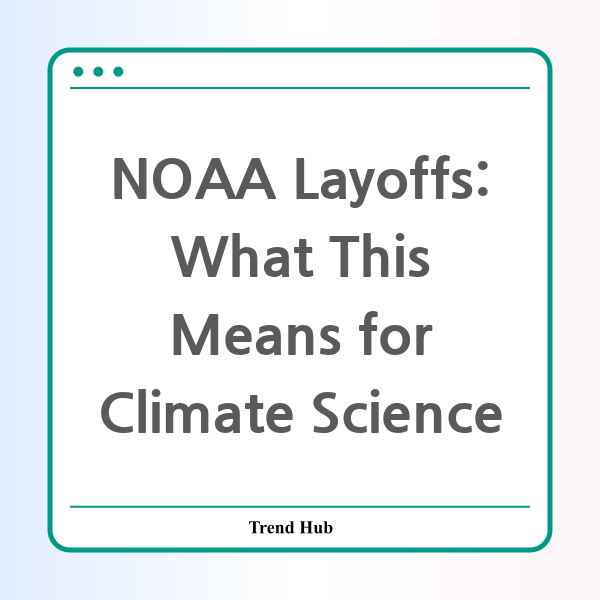* This website participates in the Amazon Affiliate Program and earns from qualifying purchases.

What do the recent NOAA layoffs mean for the future of climate science?
This is the pressing question as the reverberations of a Supreme Court ruling continue to affect the National Oceanic and Atmospheric Administration (NOAA). The agency, pivotal for weather forecasting and climate research, has now seen hundreds of its climate workers terminated, adding to a staggering total of about 16,000 federal employees who have lost their jobs. This situation raises serious concerns about public safety, especially as the hurricane season approaches.
Amidst the escalating climate crisis, NOAA employees, who have played essential roles in monitoring weather patterns and climate data, are left grappling with the aftermath of these firings. The affected workers included scientists and technicians who are vital to weather predictions and managing the nation’s fisheries. This loss of expertise, particularly just before a critical period of severe weather events, is alarming.
One of the significant concerns is the impact on hurricane forecasting. NOAA's ability to predict and provide timely warnings for hurricanes and tornadoes is crucial for safeguarding lives and property. With reduced manpower, the quality of these predictions could be compromised, leading to inadequate preparation for storms. Just as importantly, the termination of employees involved in climate science complicates efforts to understand and mitigate the impacts of climate change.
Impact on Fisheries Management
The repercussions extend beyond weather forecasting into the realm of commercial fisheries management. NOAA is responsible for ensuring sustainable fish populations and healthy marine ecosystems. The layoffs could hamper these critical functions, affecting fishery management decisions that rely on comprehensive data and the expertise that has been accumulated over years.
Furthermore, experts have expressed deep concerns about the potential privatization of weather predictions that may arise from these cuts. There’s a fear that the quality and accuracy of weather data could deteriorate, jeopardizing not only local communities but also international cooperation in climate monitoring and disaster response.
The Path Ahead
Democratic members of the Natural Resources Committee are demanding further clarification on the implications of these firings, highlighting the uncertainty surrounding the agency's future. Unfortunately, responses have been minimal, with the political divide stalling meaningful discussion on how to stabilize NOAA.
This current state of affairs is a stark reminder of how intertwined government policy and climate science are. With the world facing unprecedented environmental challenges, the diminishing of NOAA’s workforce threatens the United States' leadership in climate research and mitigation efforts. As federal support for such agencies wavers, it raises the urgent need for advocacy and action from both the public and policymakers alike.
In conclusion, the mass layoffs at NOAA not only dismantle an essential body of scientific expertise but also pose a substantial risk to public safety and the nation's preparedness for climate-related disasters. The road ahead will require sustained attention to ensure that these pivotal roles are not permanently lost in the fight against climate change.
* This website participates in the Amazon Affiliate Program and earns from qualifying purchases.